The claim to leaf-peeping fame may belong to New Englanders, but the Rocky Mountains serve up some of the country’s most dazzling spots for fall foliage. The region’s aspens and cottonwoods rival any Massachusetts maple when it comes to color. From Bozeman to Boulder, trail corridors ignite in gold and rust as the leaves turn in the Rockies. All of it plays out against mountains formed roughly 80 million years ago — and Colorado alone is home to 53 fourteeners — so the backdrop is as epic as the color. Peak timing varies by elevation — generally late September to early October — so plan accordingly. Grab your camera and your walking shoes, layer up, check the forecast and trail conditions, and start planning these stunning Rocky Mountain hikes for fall.
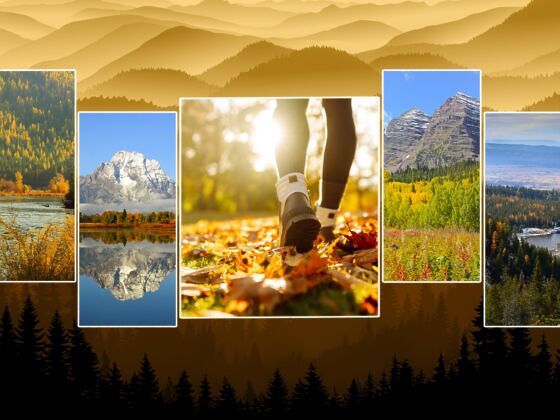

The Most Scenic Fall Hikes in the Rocky Mountains to See Stunning Foliage
We hope you love the spaces and stays we recommend! Just so you know, Matador may collect a small commission from the links on this page if you decide to book a stay.
West Fork Rio Santa Barbara Trail, Carson National Forest, New Mexico

Photo: bjul/Shutterstock
Distance: 20.4 miles
Difficulty: Moderate to strenuous — gradual 3,183 feet of total elevation gain
Tucked within the Pecos Wilderness of Carson and Santa Fe National Forests just south of Taos, the West Fork Rio Santa Barbara Trail follows a steady climb through wide meadows and dense aspen groves, with the Rio Santa Barbara murmuring below. Early fall offers both live wildflower displays (typically July–August) and golden aspens late in the season. The trail gently ascends via switchbacks, opening to broad views of the Sangre de Cristo peaks, including Chimayosos. Extend your hike toward the Santa Barbara Divide and Truchas Lakes if time allows — these areas reward with alpine panoramas, though camping is sparse above treeline and prohibited within 300 feet of lakes.
Where to stay: Base yourself in Taos, less than an hour’s drive from the trailhead, where art, history, and mountain culture come together. Check out Matador’s selection of Taos Airbnbs for nearby options.
Goose Creek Falls, McCall, Idaho
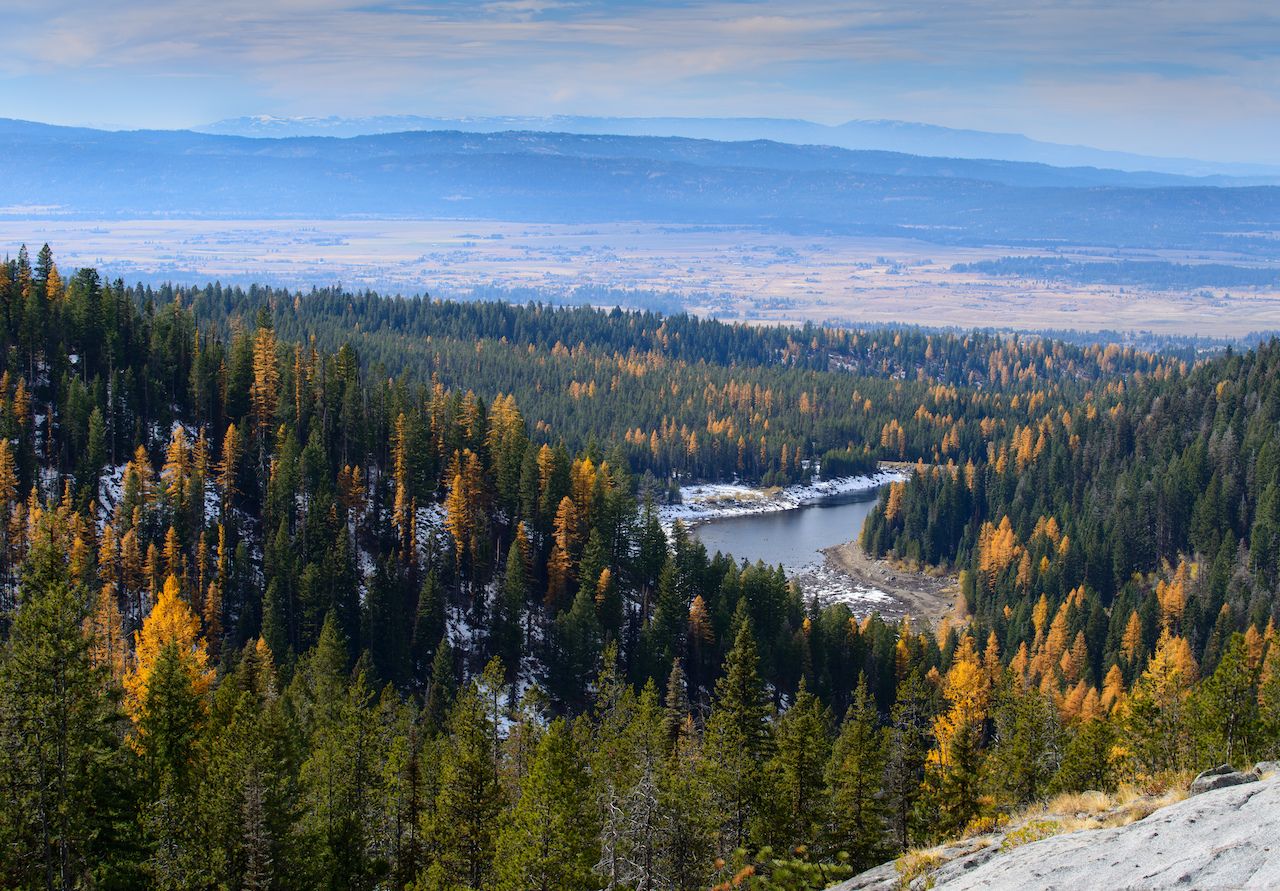
Photo: Sarah Jessup/Shutterstock
Distance: Three miles in and out
Difficulty: Moderate — 685 feet of total elevation gain
Evergreen firs, spruces, and pines rise above lower foliage that flares with fall color on this trail in the Payette National Forest near Brundage Mountain Resort. Summer sees plenty of traffic here, so fall is the better season if you want the forest to yourself. Starting from the Last Chance Campground, the trail crosses small creeks and winds along well-marked paths before reaching the 60-foot Goose Creek Falls. A short scramble down to the river gives you the best perspective, looking up at the water plunging through a basalt canyon. In October, the larches add a burst of yellow to the already colorful mix.
Where to stay: Make your base in McCall, just minutes from the trailhead, with cabins and mountain retreats that put you close to both the forest and Payette Lake. Options range from angular A-frames with loft bedrooms and big windows that look into the pines, to renovated lake cabins with decks facing the water and short walks into town for dinner.
South Cottonwood Creek Trail, Bozeman, Montana
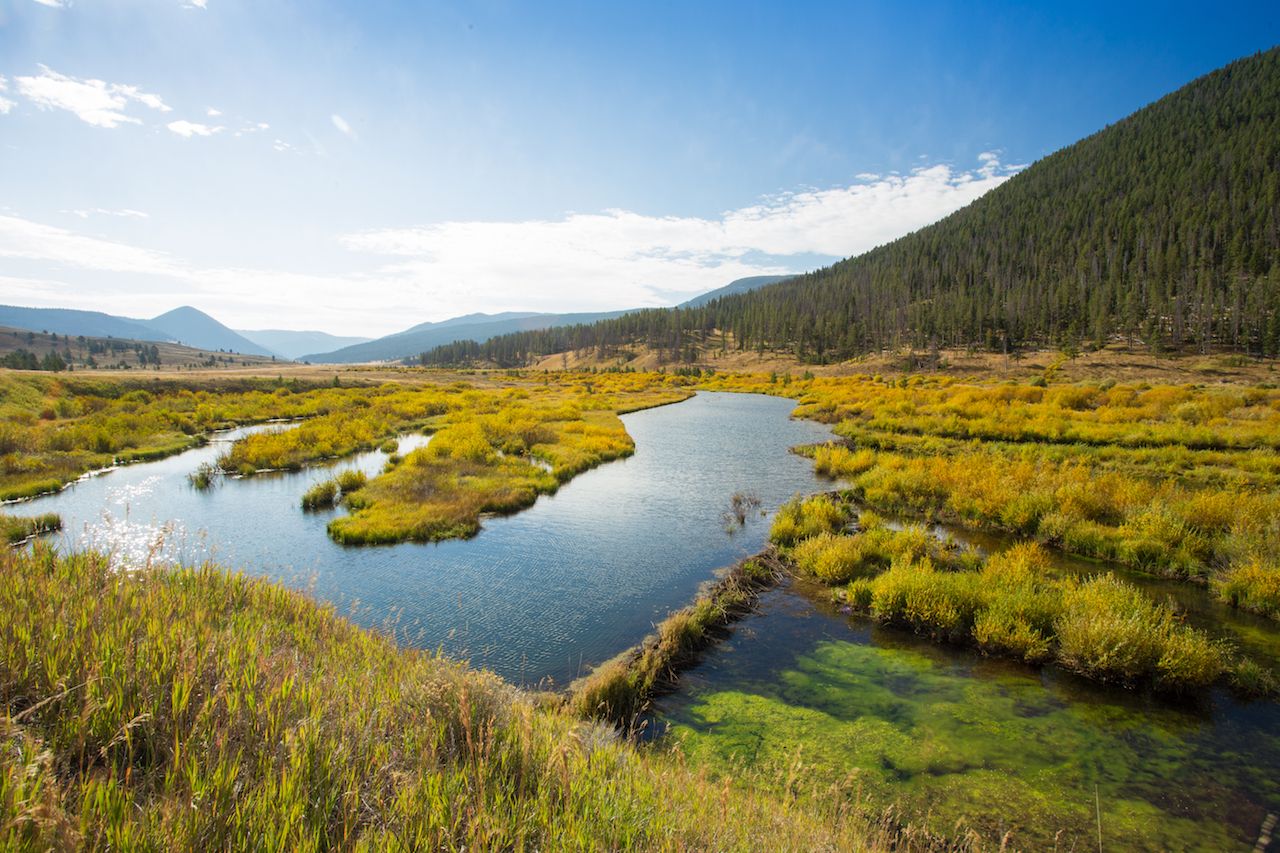
Photo: Brian A Smith/Shutterstock
Distance: 4.4 miles out and back
Difficulty: Easy — 488 feet of total elevation gain
Not to be outdone by aspens in fall, bright orange cottonwoods light up dense forests and expansive meadows on this easy trail in the Gallatin Range just outside Bozeman. If you hit the trail on a warm fall day, South Cottonwood Creek runs alongside nearly the entire way, offering spots to cool your feet. While you might not break a sweat with fewer than 500 feet of elevation gain, you can extend the outing by connecting to the History Rock or Blackmore trails. Those spurs make the area as good for a casual afternoon walk as for a longer overnight in Hyalite Canyon.
Where to stay: Bozeman is the natural base for this hike, less than 20 minutes from the trailhead. On the outskirts of town, there’s a two-bedroom place with a covered deck facing the Bridger Mountains, reclaimed timbers sourced from Glacier National Park, and custom furniture that makes the interior as striking as the views. If you’d rather stay central, there is a recently built townhome just a couple of blocks from Main Street with a chef’s kitchen, a soaking tub, and windows that frame both city streets and mountain views. It’s close enough to walk to dinner or ride the provided cruiser bikes to breweries and galleries.
More like this
Mount Sentinel: The “M” Trail, Missoula, Montana
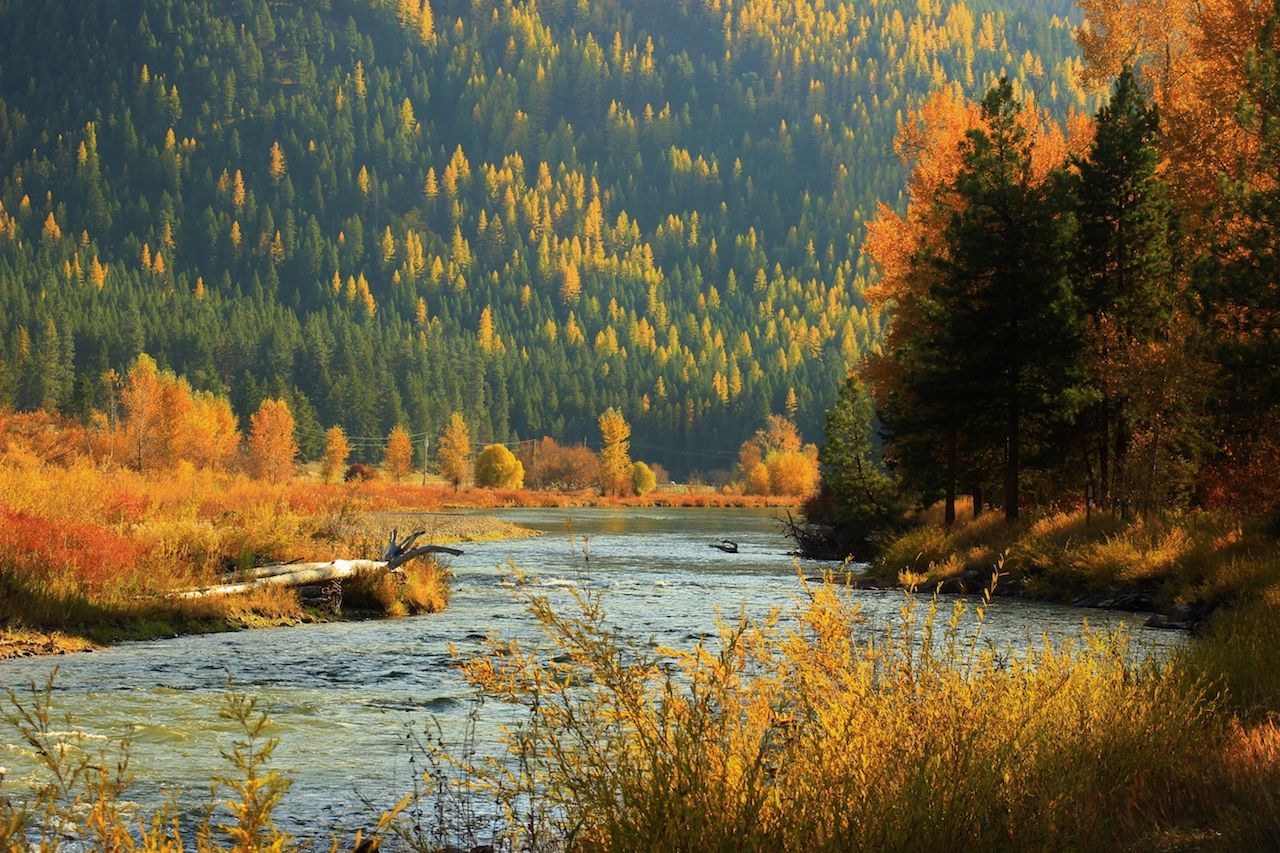
Photo: Patti Anderson/Shutterstock
Distance: 3.5 miles up and down
Difficulty: Strenuous — 11 switchbacks with 1,958 feet of total elevation gain
This hike is popular with visitors and locals alike, and the summit looks out over Missoula and the University of Montana campus. In fall, the valley bursts with a range of oranges and yellows as the leaves turn. From the top, the Clark Fork River winds through town, and mountains stretch away to the north and south. The concrete “M” replaced the original stone version built by students at the start of the 20th century.
Where to stay: Instead of staying in Missoula, base yourself in Stevensville, about half an hour from the trailhead. This stunning Airbnb is set on 10 acres at the edge of the Sapphire Mountains and gives you both privacy and big-sky views across the Bitterroot Valley. With two bedrooms and space for four guests, it works for couples or families looking to balance a day on the “M” Trail with evenings away from the city. From here, you’re well placed to explore the small towns of the valley or head south into the Bitterroot National Forest.
Taggart Lake-Bradley Lake Loop, Grand Tetons, Wyoming
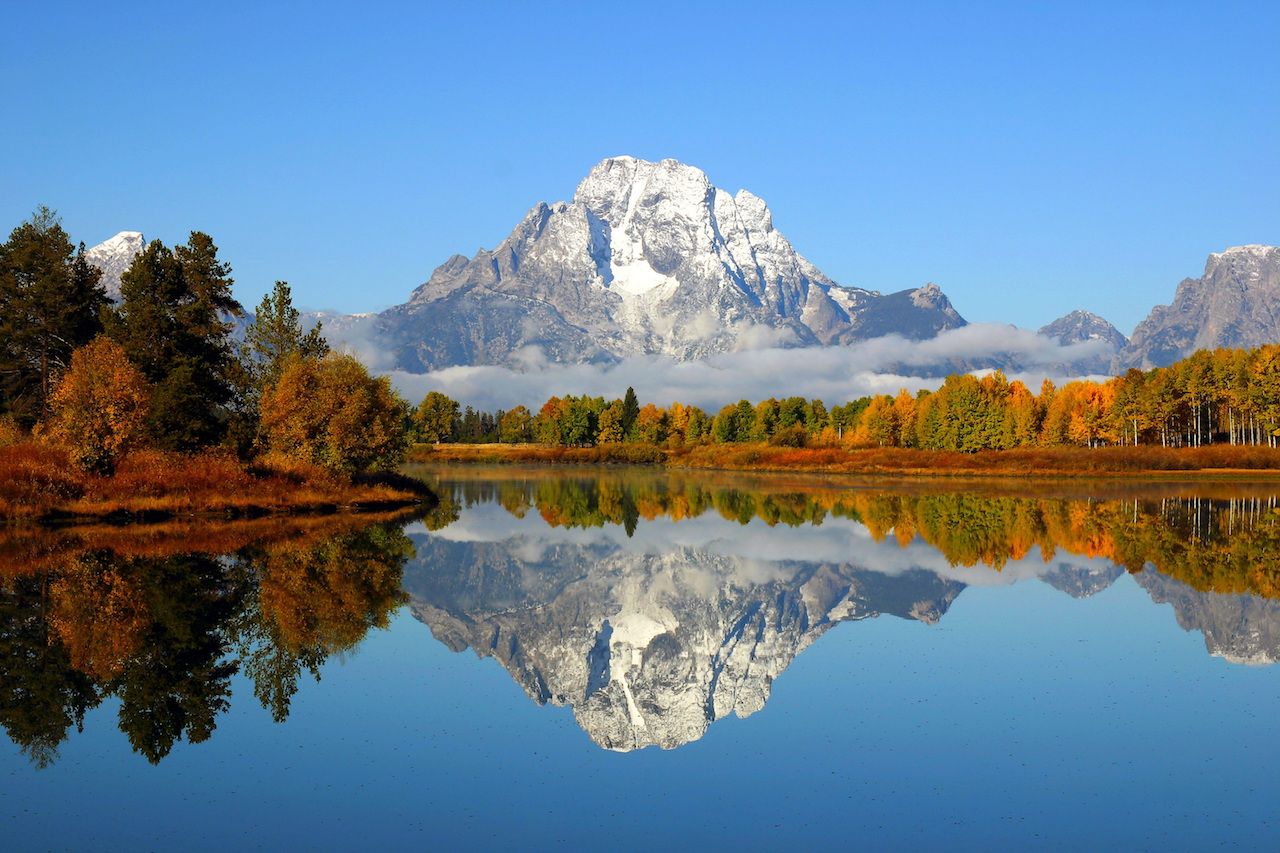
Photo: Rob Marmion/Shutterstock
Distance: 5.5 miles roundtrip
Difficulty: Moderate — 585 feet of total elevation gain
This loop hike offers a huge payoff for seemingly little work. Glacial lakes reflect craggy Teton peaks, including Grand Teton itself. The peak towers nearly 14,000 feet over sagebrush and patches of forest that flame yellow and orange with autumn aspens. Along the way, keep an eye out for moose grazing near the lakeshore or black bears working the berry patches. Panoramic views of the Tetons stretch across both Bradley and Taggart Lakes, making this one of the park’s most photographed hikes. Bear spray is a must here, as the trail cuts directly through prime wildlife habitat.
Where to stay: The trailhead sits just outside Moose, but most visitors base themselves in nearby Jackson, where rentals range from modern townhouses in walking distance of the square to bigger lodges looking onto the Elk Refuge. Teton Village is another option, especially later in the season when Jackson Hole Mountain Resort begins operating. See Matador’s Airbnbs near Grand Teton National Park for more ideas on both sides of the state line.
Fern Lake Trail, Rocky Mountain National Park, Colorado
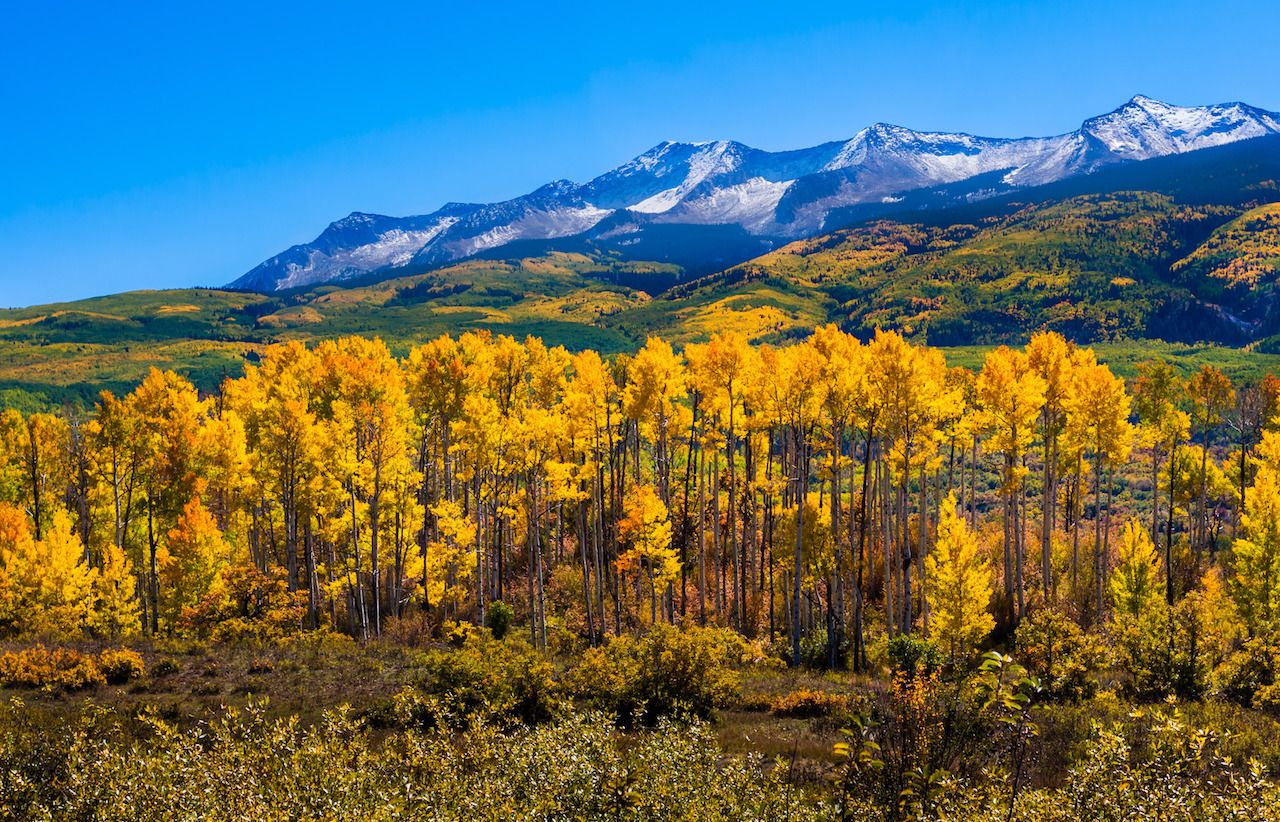
Photo: De Lorcel/Shutterstock
Distance: 7.6 miles out and back
Difficulty: Strenuous — about 1400 feet of total elevation gain
The Fern Lake Trail offers beautiful views of the valley below as it winds along the Big Thompson River before reaching The Pool, a turbulent confluence of Fern Creek and the river. The path then climbs past 60-foot Fern Falls before continuing to Fern Lake. At the northern shore you’ll see 12,000-foot Notchtop and Knobtop Mountain, while a short walk to the east side opens up a clear view of nearly 13,000-foot Stones Peak.
Where to stay: Estes Park is the closest town to this trailhead, with rentals that put you within minutes of the park entrance. Options range from hillside cabins with wraparound decks to downtown apartments within walking distance of restaurants and shops. For more, see Matador’s guide to Airbnbs in the Estes Park area, which also includes stays on the Grand Lake side of the park.
Royal Arch Trail, Boulder, Colorado
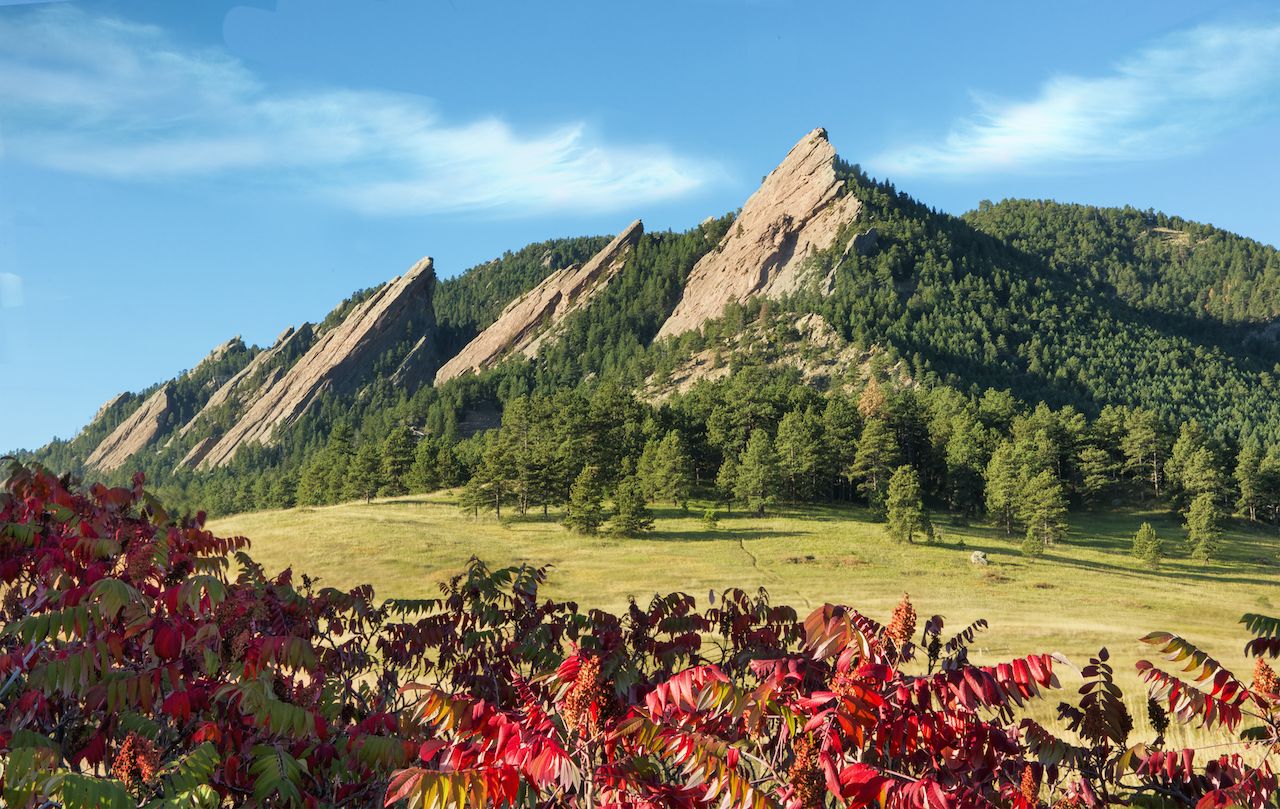
Photo: JKO Photos/Shutterstock
Distance: 3.5 miles out and back
Difficulty: Moderate to strenuous — about 1400 feet of total elevation gain
Cooler autumn days should give you more privacy on this heavily trafficked trail to the red rock arch. It may be short, but it’s no cakewalk. You’ll gain 1,400 feet of elevation through a grassy meadow and pine forest as you hike up along the base of the Flatirons. When you reach the flagstone staircase, scramble up and take in the reward: sweeping views of golden leaves spread across the Boulder Valley.
Where to stay: For a base in Boulder itself, the historic Hotel Boulderado is a standout. Opened in 1909 as the city’s first luxury hotel, it remains a landmark building on the National Register of Historic Places and a member of Historic Hotels of America. A renovation in 2018 refreshed the common areas, though the Victorian-style rooms still keep their original charm. The location, just off Pearl Street, means you can walk to Bramble & Hare for a Michelin-recognized dinner, grab a beer at Bohemian Biergarten, or head downstairs to the hotel’s own speakeasy, License No. 1. The hotel was also one of Matador’s managing editor Nickolaus Hines’s favorites of 2024.
American Lake Trail, Aspen/Snowmass, Colorado
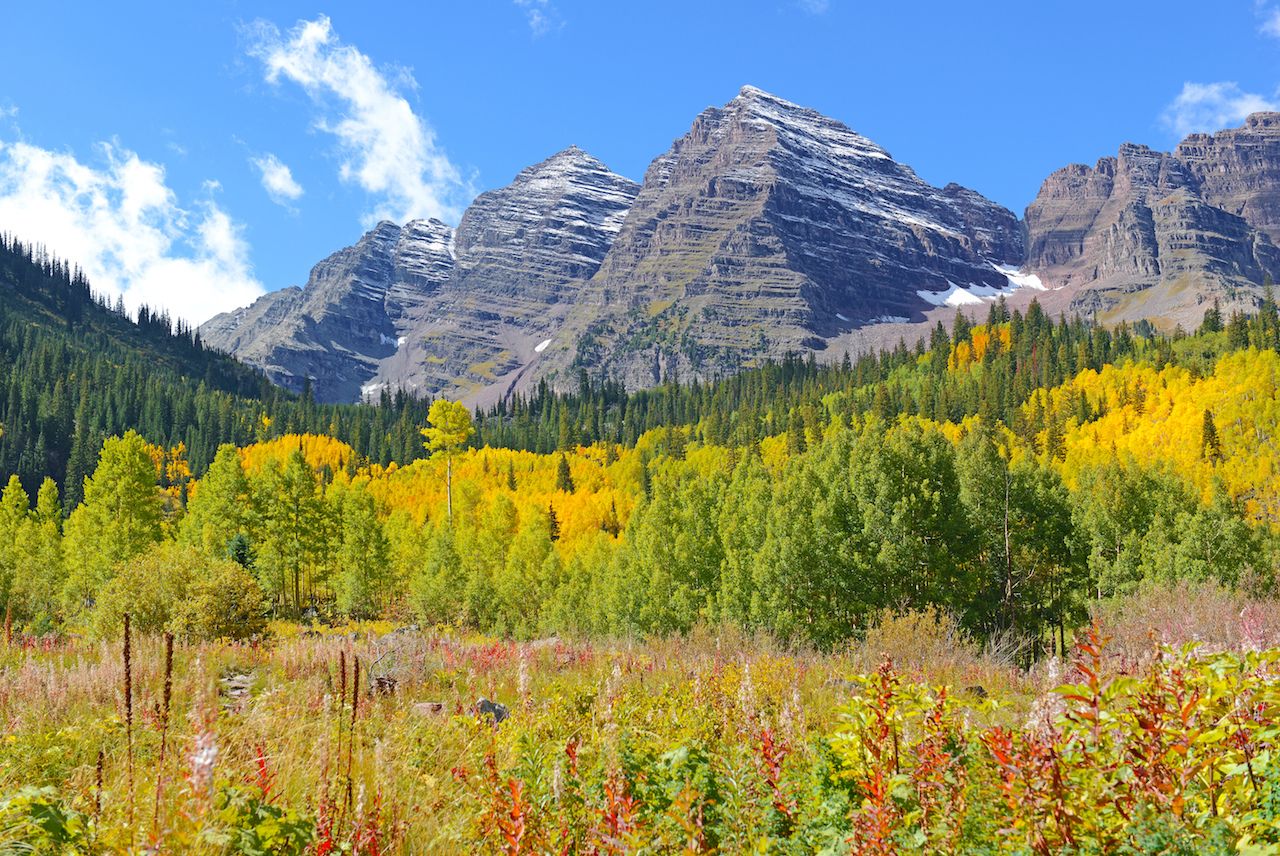
Photo: robert cicchetti/Shutterstock
Distance: 6.4 miles up and down
Difficulty: Moderate — gradual 1,965 feet of total elevation gain
As legend has it, the Maroon Bells are the most photographed peaks in Colorado — likely a result of the parking lot at Maroon Lake, which gives tourists a hike-free payoff. On this trail, the steady switchbacks climb through aspen groves and open meadows, each turn offering wider views of the peaks, Castle Creek Valley, and the Maroon Bells Wilderness. Rest at American Lake’s shoreline for a reflection shot of the surrounding ridges, or walk a bit farther along the shore to find quieter angles.
Where to stay: Aspen is the closest base, with rentals that run from slopeside condos to sprawling mountain houses. See Matador’s roundup of Aspen Airbnbs for stays that match the town’s glamorous mountain reputation.